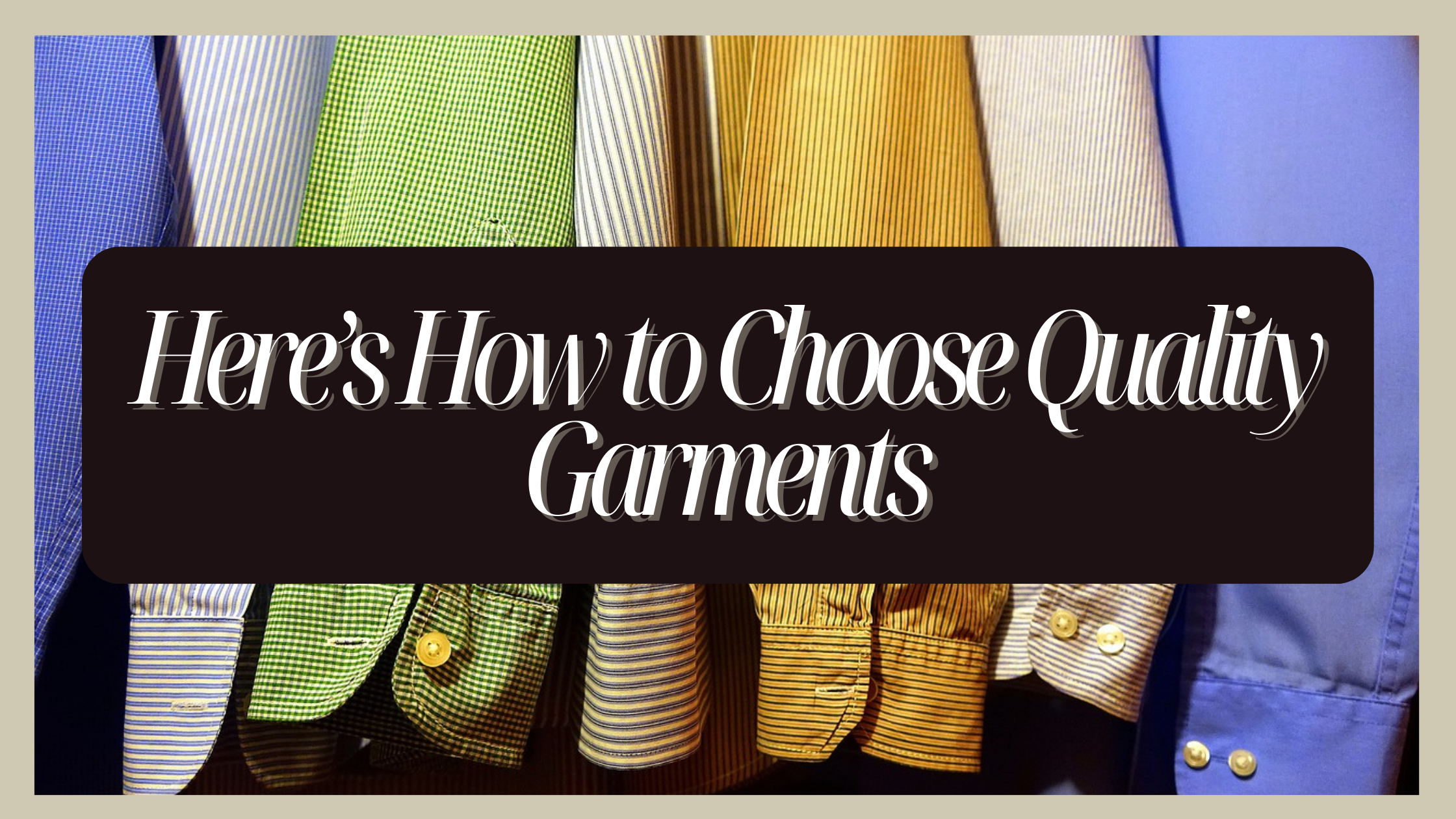No products in the cart.

When we purchase clothing, we want our items to last until we’ve gotten the last bit of use. It’s disappointing to buy a pair of jeans only to have the seam rip out the third or fourth wear or to buy a t-shirt only to wear it twice before the fabric begins to pill and it no longer looks new. Before the next time you shop, commit to purchasing quality garments and accessories that will last beyond a few wears. Not only will this help your pocketbook, but it will also help you to move more toward a sustainable closet.
NOTE: A High Price Doesn’t Necessarily make for Quality Garments
A common misconception is that buying quality garments requires a lot of cash. This couldn’t be further from the truth. Not all high-priced garments are quality, and not all inexpensive items are poorly made. It would be a lot easier to pick out quality garments if we could do so by price!
Instead, by looking at the following quality indicators, you can determine whether a brand’s garment is indeed made with quality or if you should skip it in search of another item that will hold up over the long run.
Fabric Is Usually the First Indicator of a Quality Garment
Humans are tactile creatures. When you first come across a garment with purchasing potential, feel it. How does the fabric feel in your hands? Is it scratchy? Soft? Does it feel heavy? Thin? Does the dye rub off on your skin when you try it on? How does the fabric drape? Is it stiff, or does it move when you move? When you look at the tag, what is the garment made from? Consider skipping it if it’s not 100% natural materials. Nylon, polyester, and other synthetic materials pill faster and contribute to the microplastic pollution problem.
What Construction Methods Were Made? What Finishing Techniques Were Used?
If the fabric feels good, is made of natural materials, and drapes well, it’s time to turn your attention to the inside of the garment. Look at the hem. Is it even? Did a machine make it, or does it appear to be hand-stitched? Was the fabric turned under before hemming (this will last longer)? Next, look at the seams. Are they serged with raw edges (these will tear out sooner), or are they flat felled seams or French seams (where the raw edge of the fabric is hidden)? Are the threads trimmed? Are the stitching on the seams tight or loose? Is there extra fabric in the hem if a tailor needs to let out a seam for a better fit?
What are the embellishments on the item made from? How are they attached?
If your garment or accessory is otherwise constructed well and made from quality fabrics, but the embellishments are not high-quality, it can be a major downer. Glued-on rhinestones pop off, poorly affixed graphics peel, and sequins get on everything else in your wardrobe, leaving holes in your garment’s design. First, check whether embellishments are glued on or sewn on. Glued-on embellishments have a way of coming off over time. Scratch at graphics; if they feel plastic to you, they’re probably heat transfer vinyl instead of screen printing, and if the heat press was not the right temperature, that cute graphic will look pretty shabby pretty quickly. Finally, check the threads for any sewn-on embellishments. Are they tight or loose? Might they snap easily if they get caught on your watch or an earring as you put the garment on? Finally, rub against sequins or gems. They should move without coming off on your hands.
Fit Is Another Indicator of Garment Quality
Finally, if you haven’t already done so, check the fit of your garment. Well-constructed garments will lay flat, seams will hit where they are supposed to, and won’t poke out. Move in the garment. Does it move with you, or does it feel stiff? Sometimes, the fabric isn’t cut right in an effort for even high-end clothing manufacturers to save money, and if it’s cut against grain or on the fabric’s bias, it won’t lay like it’s supposed to. Seams roll, hems roll, and overall, you find yourself pulling at the garment. Do not buy a garment that looks beautiful on the hanger but drapes strangely when worn. It won’t get worn.
Paying Attention to Garment and Accessory Quality Moves You Toward a More Sustainable Lifestyle
Moving away from fast fashion or clothing that will be tried on in your closet a few times and then donated or tossed in the trash, you’re committing to a more sustainable approach to fashion. Not only is this good for the environment, it’s good for your pocketbook. Quality clothing can be tailored if you gain or lose ten pounds. It can look good for a long time so long as you follow its care instructions. Because you’re not always buying new work slacks, you can use that money for other items in your wardrobe.
